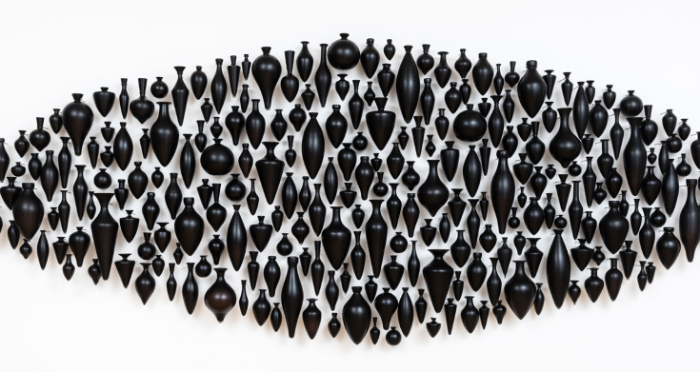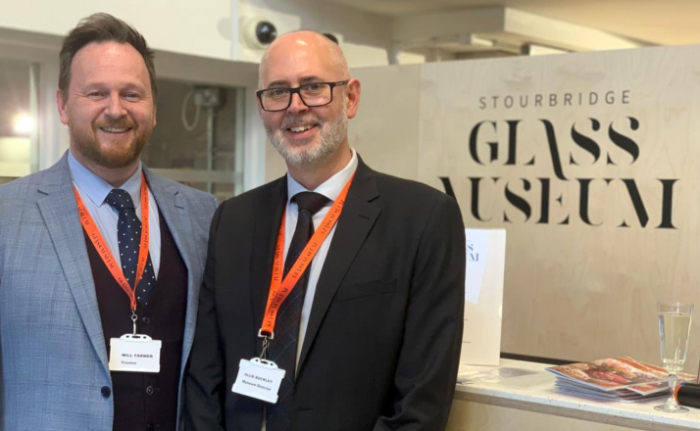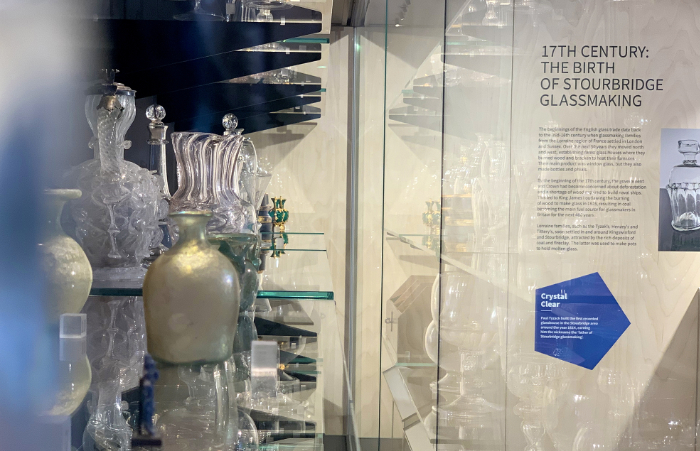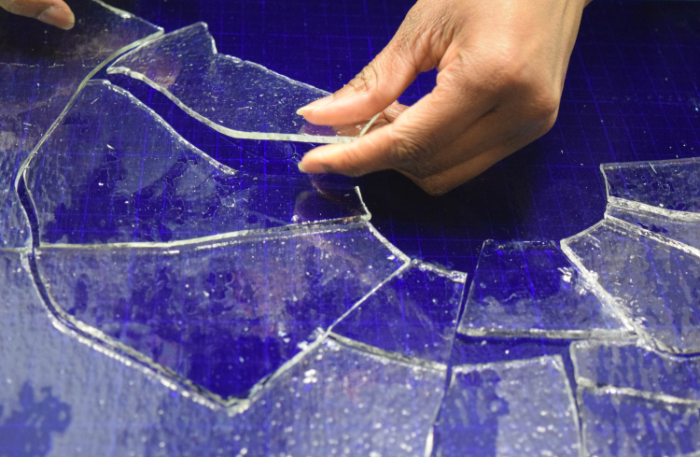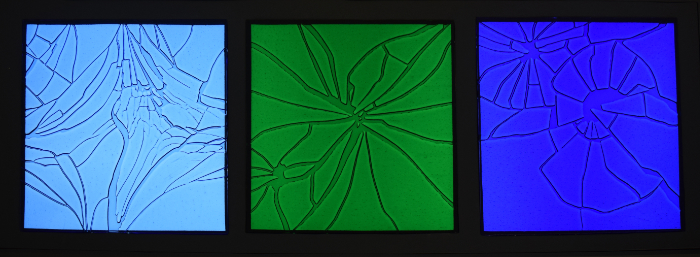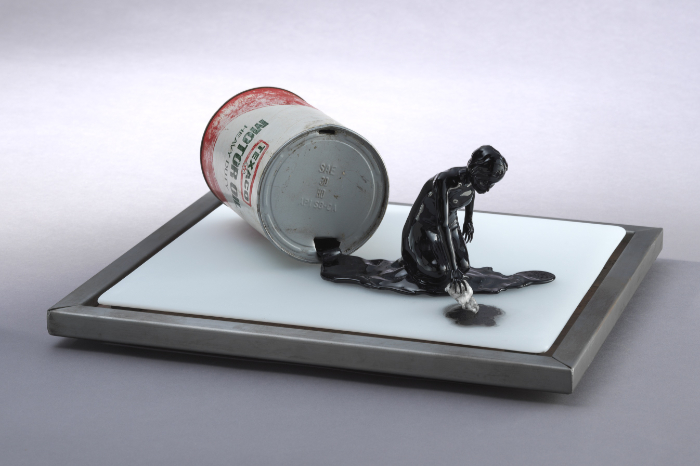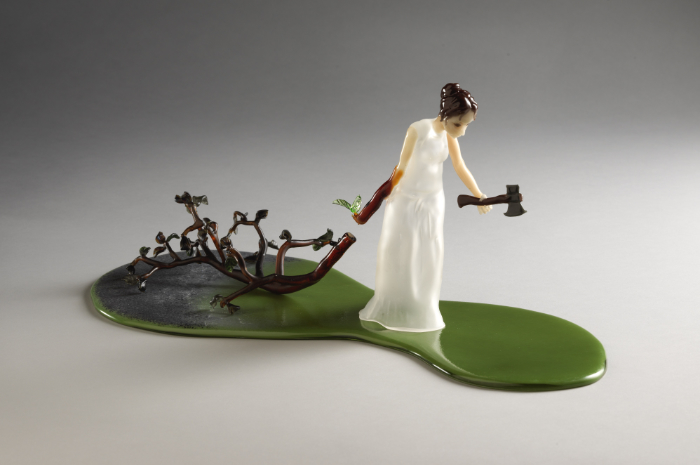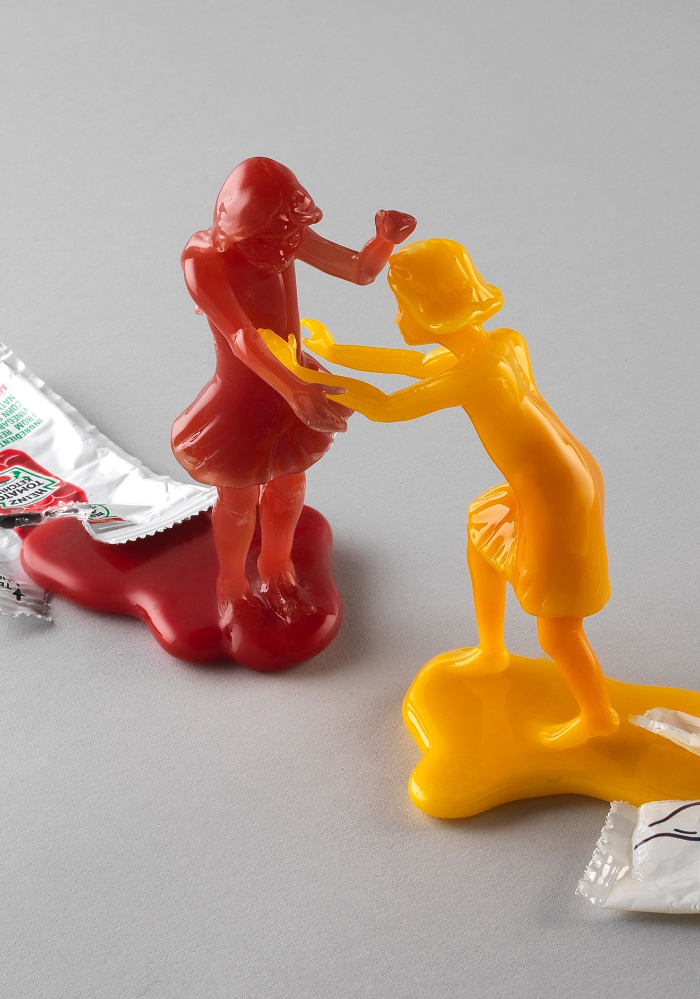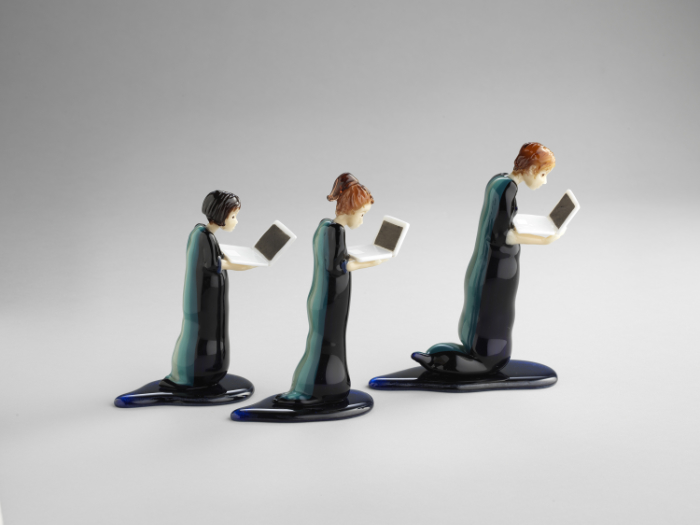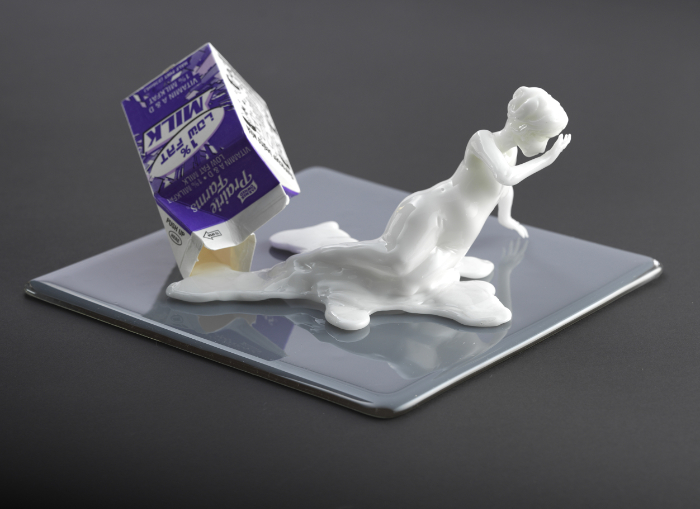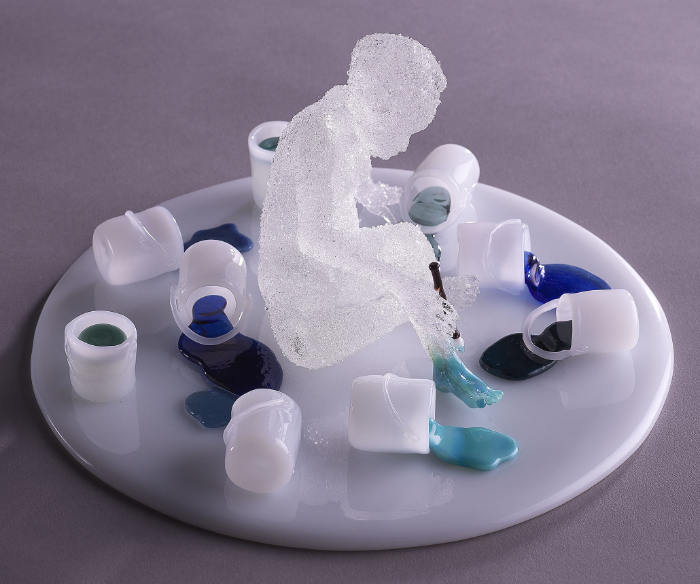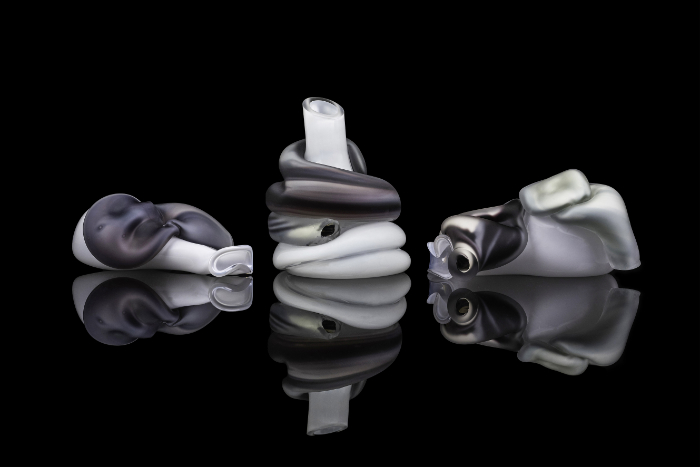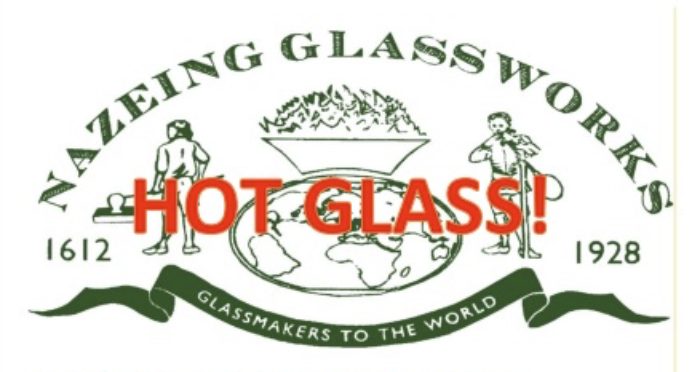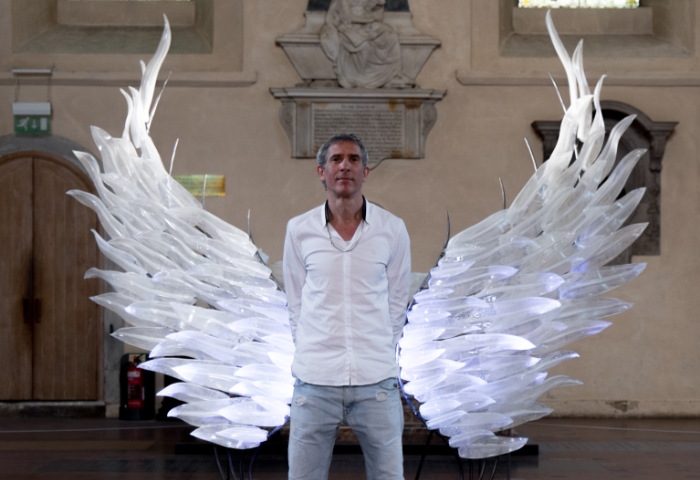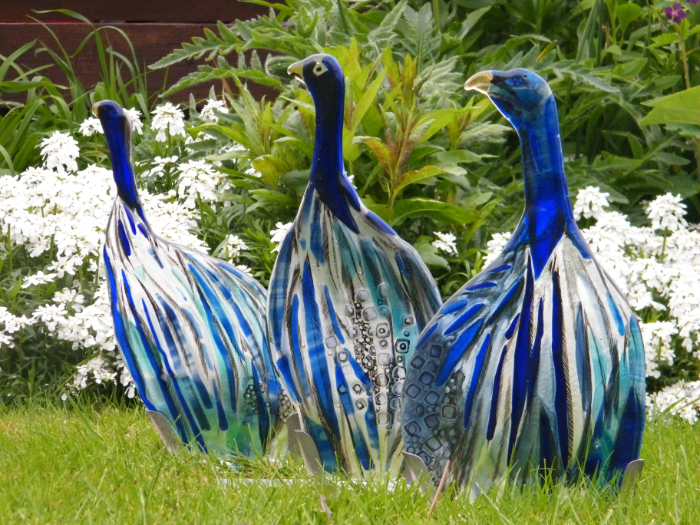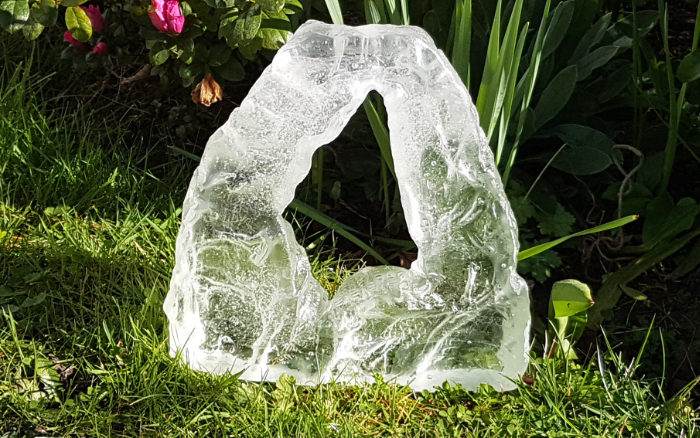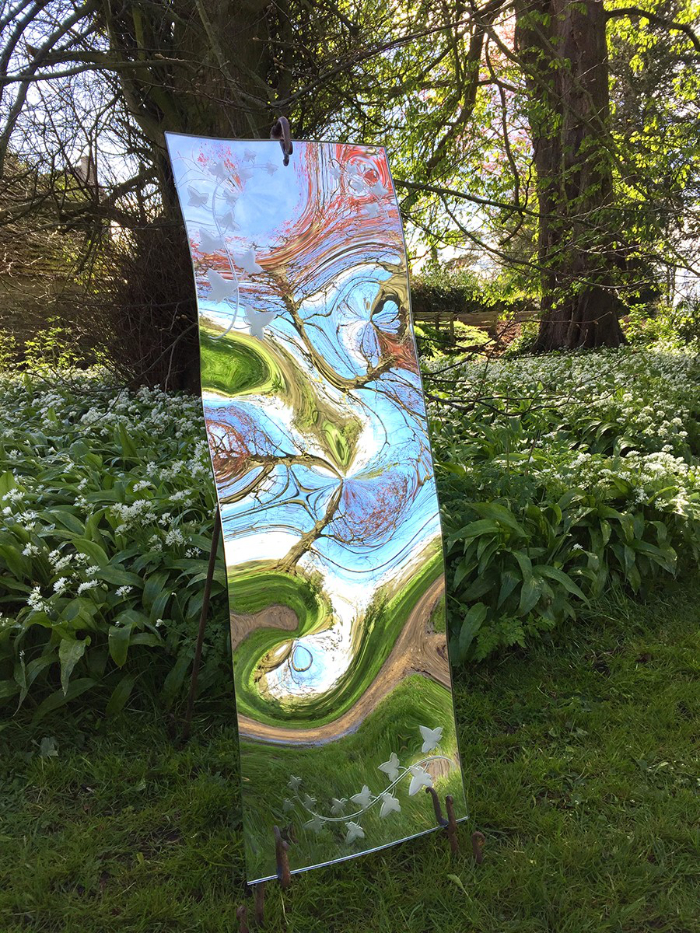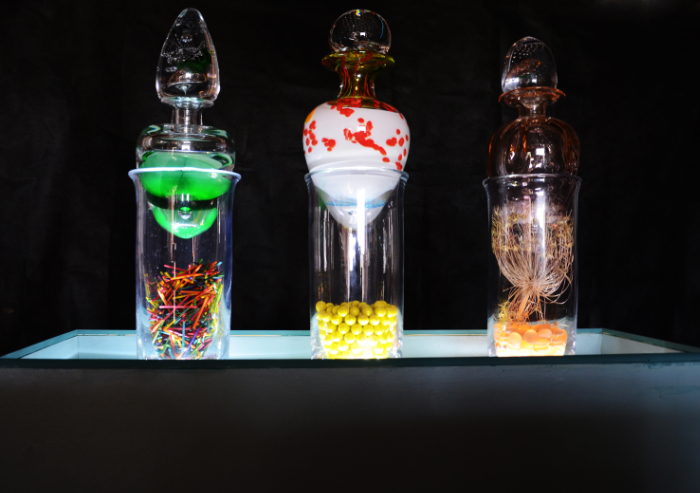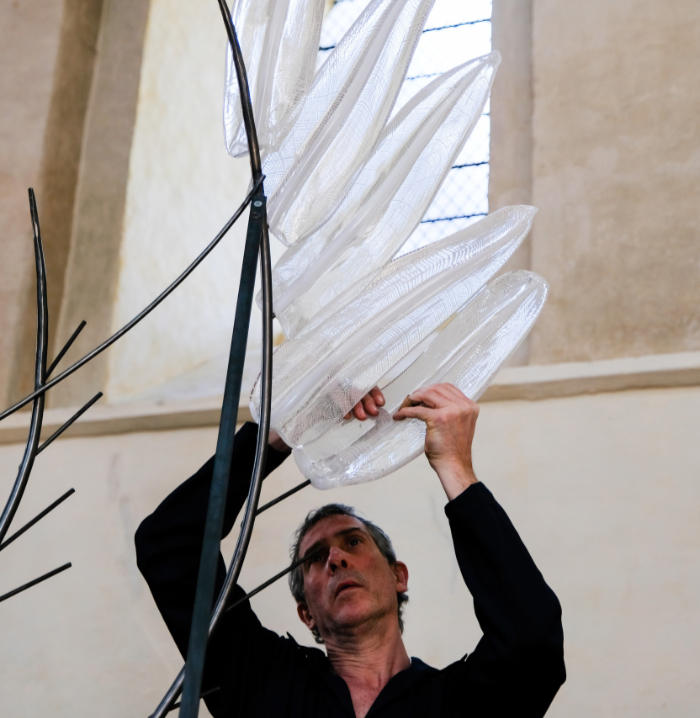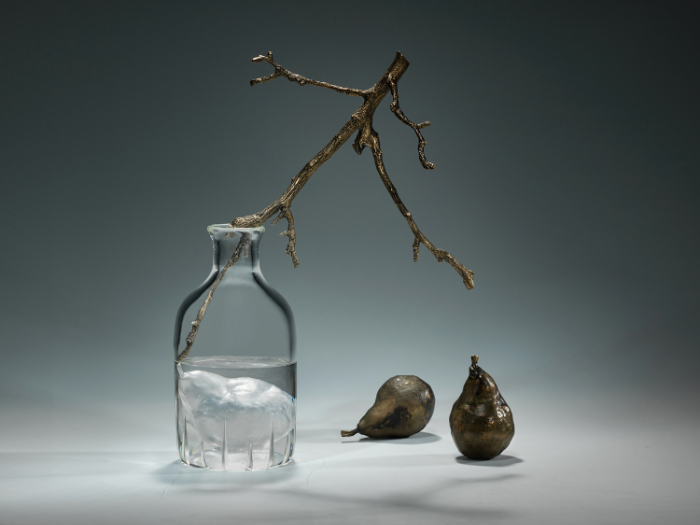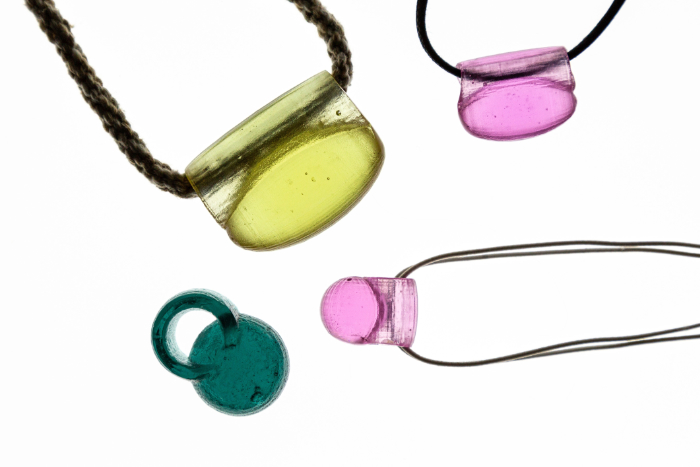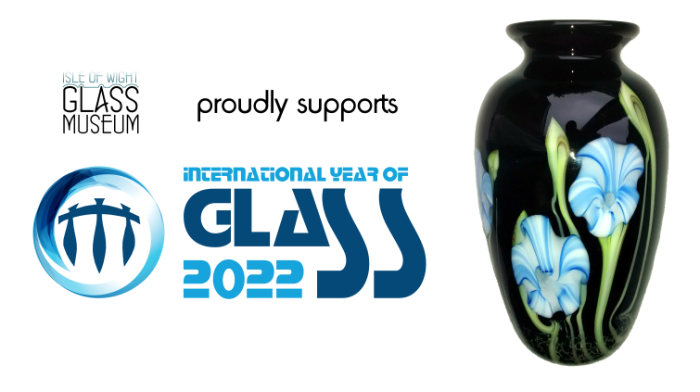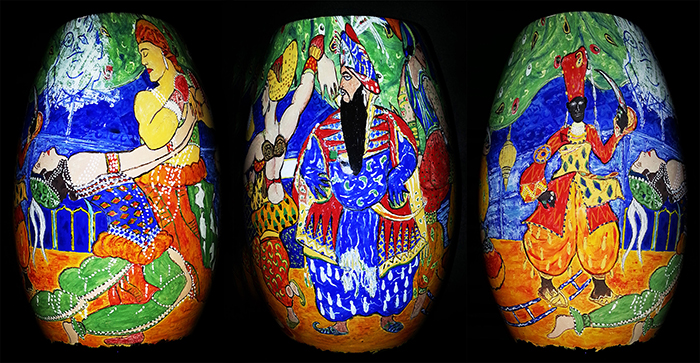
Vic Bamforth’s glass has an instantly recognisable, often humorous, painterly style, which he combines with his own version of the specialist Graal technique. Recently, he has been creating colourful, sculptural forms. Here he explains his journey with glass to Linda Banks, editor of Glass Network digital.
What led you to start working with glass?
Having worked for a short while in stained glass, I decided to explore the world of glass further. In 2000, my brother Ian and I enrolled on an evening class in glassblowing. In 2001 we decided, with encouragement from our tutor, to pursue glass full time, so we enrolled on the Glass Techniques & Technology course at Dudley International Glass Centre (IGC).
One of my blown pieces was selected for the V&A’s ‘Inspired By’ exhibition for part-time students, which gave further encouragement. After leaving the IGC, we were awarded an internship at the Red House Glass Cone’s glassblowing studio in Wordsley where we developed our work professionally.
In 2010, with glass makers Stephen Foster and Peter Fricker, we set up Stourbridge Glassblowing Studio at the newly redeveloped Ruskin Glass Centre. I also took on a separate studio there to focus on researching, designing and painting works in preparation for the blowing studio.
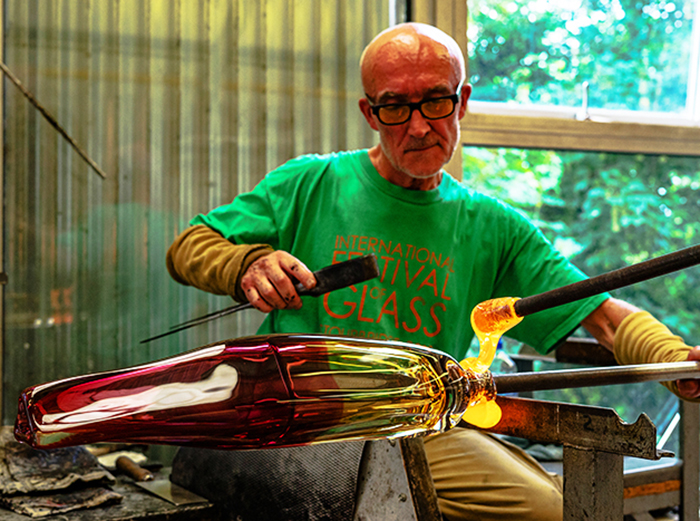
You have perfected the use of the Graal technique. Why does this method appeal to you and how have you made it your own?
My interest in the traditional Graal technique evolved from working with sheets of flashed glass at the IGC. I began introducing simple, bold, colourful imagery, such as jazz musicians, by sandblasting through the top colour to reveal the one below. Then I picked the sheets up on hot clear blanks and cased them in clear glass. The optical properties and qualities of thick, clear, walled vessels instantly appealed.
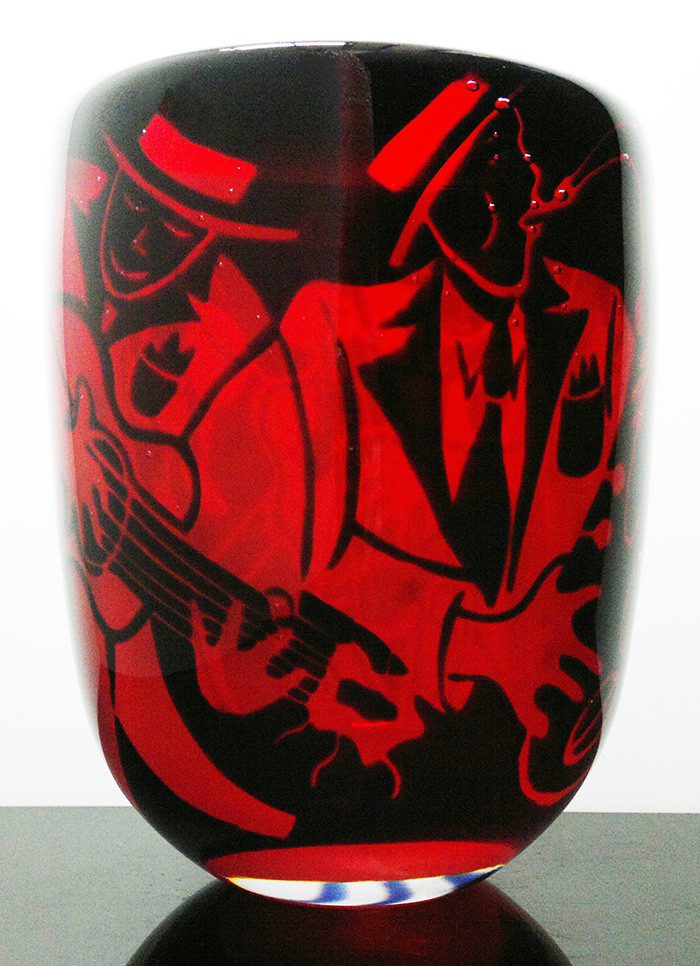
Several people commented on how Graal-like these pieces were, which prompted me to name the technique ‘Flagraal’. Soon afterwards I started making traditional Graal pieces, which involved covering the blanks in a vinyl resist through which I would hand cut designs, ready for sandblasting. Then I discovered a box of high firing onglaze enamels (Paradise Paints from California) and suddenly the surface of the blank became a canvas.
I just had childlike fun playing with them in a loose and naïve way. Not being a painter, I had the advantage of no inhibitions. I had no tuition or preconceived ideas nor plans or real direction. All I did was enjoy the exploration and discovery.
My paintings are now much more detailed and refined and have much more interesting subject matter. This is as a result of years of patience and perseverance.
You are known for your pictorial style. What is your creative approach? Do you draw your ideas out or dive straight in with the materials?
I began drawing seriously while working on painted Graal pieces for commissions and exhibitions at the Red House Glass Cone. The private commissioning process starts with conversations and reference images or photographs provided by the clients, to which I add my own research. Quick sketches are then followed by much more detailed and refined drawings, as they are a constant reference during the painting process.
I must be a little more disciplined and focused on the finished article, but I am invariably given a fairly free rein by the commissioner, as they are accepting of my representative style and how I work. This flexibility gives me the freedom to change a composition during the painting process instinctively and intuitively, feeling what is right. I appreciate this trust in me.
Diving straight in with the materials is something I used do much more frequently in the early days, working very spontaneously and uninhibitedly. However, I haven’t completely abandoned this liberating way of creating.
A lot of your work tells a story. What are the main message(s) you want to convey to your audience through your work?
I didn’t consciously set out to convey any specific messages. Many of my painted Graals have been lighthearted and humorous and it is rewarding to hear comments from observers saying how uplifting they are.
However, there are some more serious, social history pieces, too. For example, ‘The Strongest Links’ commemorates the 1910 Women Chainmakers’ Strike in Cradley Heath, West Midlands. This piece is about a serious subject, but it is still infused with a little humour!
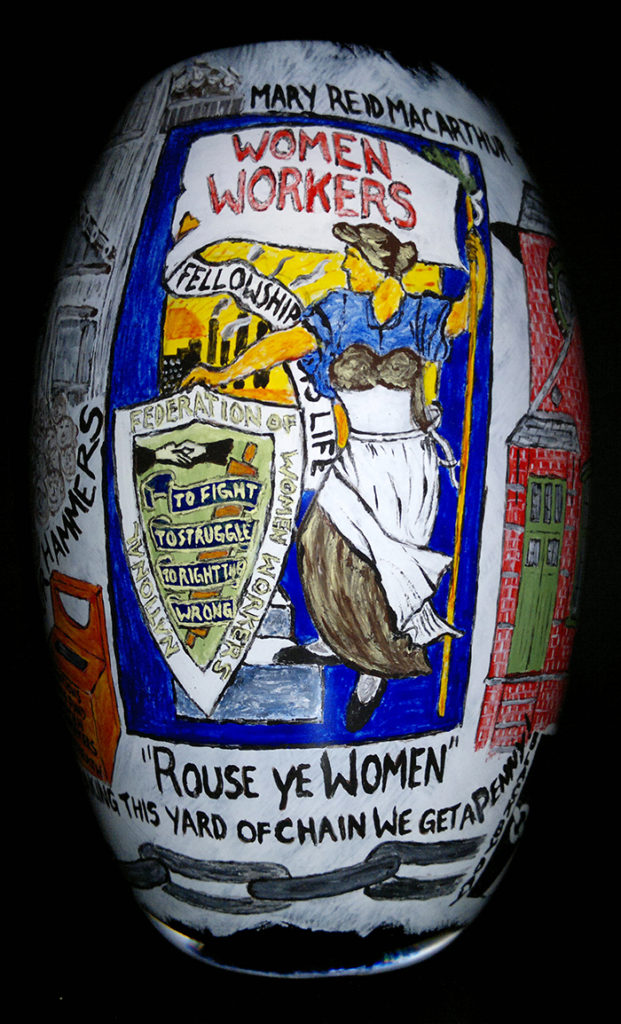
I also think there is a different kind of message conveyed by drawing a viewer’s eye in to closely inspect the work, first by attracting attention to the surface, then revealing the interior through external ‘windows’. The perfect example would be ‘Down the Rabbit Hole’ (‘Alice’ of course!).
So, I just do what I do, enjoy the journey and, if it connects with people in some way, that is a message in itself.
Your more recent vessels explore shape and bold colour. What prompted this shift in style?
There is a shift in style, but not a shift away from the painted work, as that will always be my main focus, for many reasons. What captivated me from the very beginning were the unique properties and qualities of glass – refraction, reflection, transparency, translucency, opacity, malleability and, of course, the seductive palette of bold colours available.
My Sommercalmo, Sommarial and Tricolarial collections exploit and convey some of these properties. The collections have evolved from merging the traditional Italian blowing techniques of Sommerso and Incalmo and the Swedish Arial technique, which is how they got their names. These forms are much more sculptural, organic, fluid and tactile, speaking more of the material itself.
The more recent Tricolarials have coincided with my discovery of scuba diving and love of snorkelling, where I am surrounded by shoals of beautiful, colourful fish, graceful and majestic rays and coral swaying to and fro in rhythm with the tide.
In my latest work I am using angled cutting and polishing the tops and bottoms of a couple of Tricolarials, transforming them from vessel to sculpture. For me, they are the most satisfying and exciting development yet and they are the first pieces visitors gravitate towards when they visit the studio.
I guess the next shift could be to combine the painting with much more sculptural, organic forms!
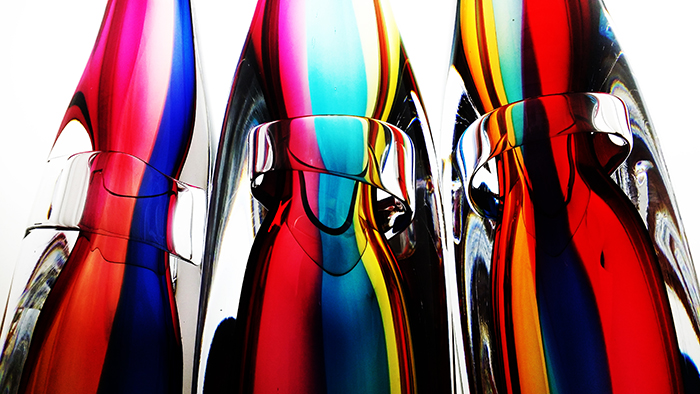
What is your favourite tool or piece of equipment and why?
There is no one stand-out favourite tool for me. However, I am very fond of my many paint brushes and their individual nuances. I particularly cherish my fine ‘mini majestic’ liners, used for controlled, detailed work. At the other end of the size spectrum are five-foot-long blowing irons which, among many other things, enable us to harness and exploit the natural forces of gravity and centrifugal force which are free tools at our disposal. Plus, there are my simple sgraffito tools, which are indispensable.
Do you have a favourite piece you have made? Why is it your favourite?
‘Down the Rabbit Hole’ is my favourite. Excellent glass artist/maker Darren Weed, who makes with me, said ‘Alice’ was the piece that was more ‘Vic’ than any other I have painted, and I agree with him.
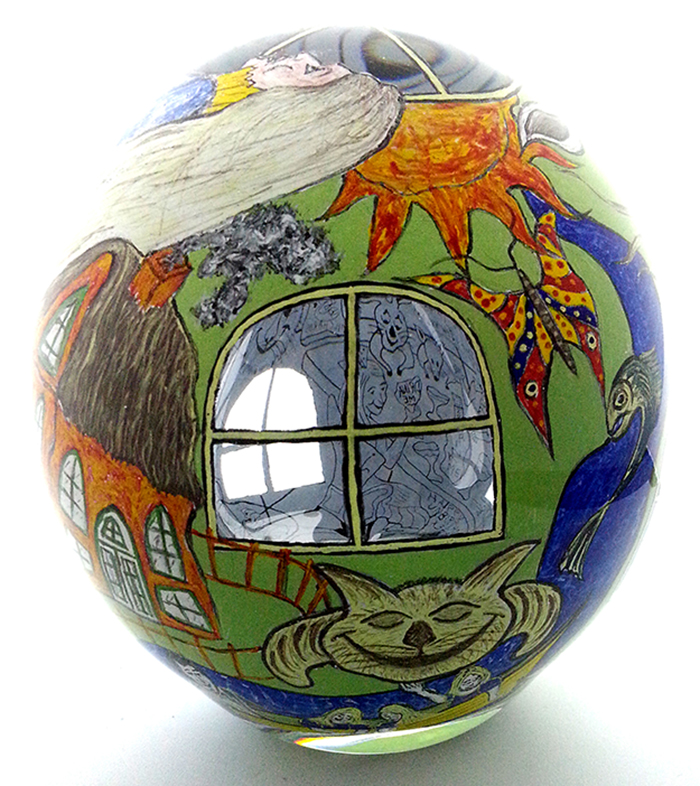
I remember I just wanted to make a piece on the subject for fun. It started out with lots of loose sketches and no intended composition. I wanted to have internal and external imagery, so we made a clear, spherical blank with an internal ‘floating’ cut off bubble. There had to be external windows through which to view the interior as per the book, ‘Through the Looking Glass’.
During the painting I listened to Tom Waits’ album ‘Alice’ and was completely immersed. I worked through the night on two consecutive days. I still wonder where it came from.
‘Alice’ now lives with John and Sharon, two friends who love, and collect, glass. They kindly allow me to show the work at events, since it must be seen and held to be truly appreciated.
I must mention another piece as well, for more personal and sentimental reasons. After about 20 years of working in glass, my brother Ian and I have recently created our first collaborative pieces. The most significant of these is our recent biographical piece, ‘From Hull to the Isle of Wight’, which was completed during a demonstration we did for the Isle of Wight Glass Museum.
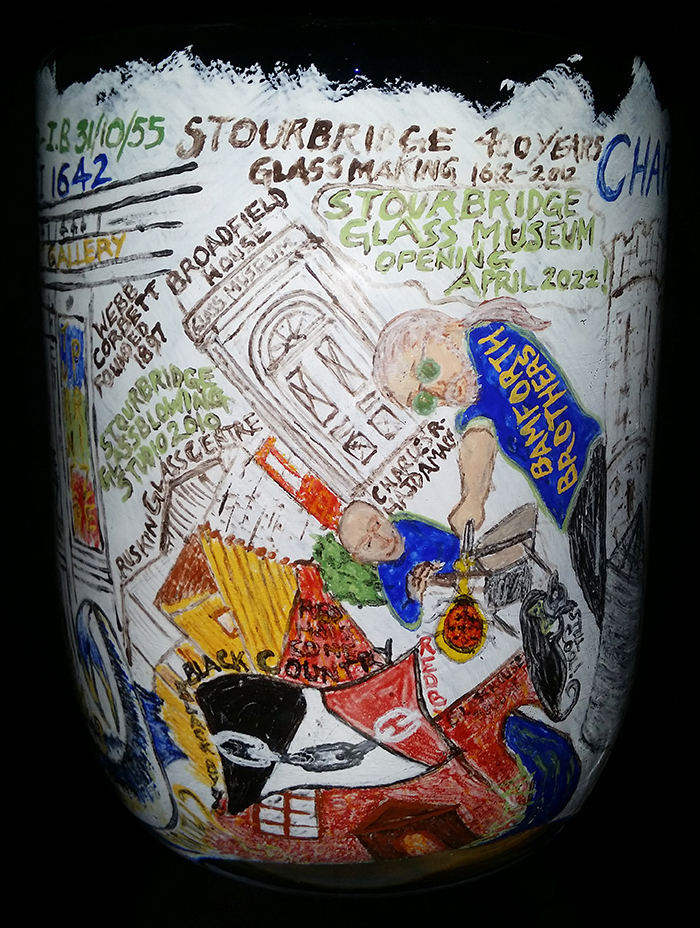
What is next for your practice?
There are private commissions to fulfil and lots of interesting, clear glass blanks to play with, including small houses, eggs, spheres, deep sea divers, and even a Rapunzel!
I will be exploring painted roll-ups too, which have been on my to-do list for some time.
In addition, Ian and I will be creating more collaborative pieces.
I have started printmaking on paper with on-site printmaker Mike Allison. These prints, along with drawings and canvas paintings, will be an interesting 2D addition to my 3D glass.
Glassmakers’ hands are protected from the intense heat of the hot glass by just a pad of wet newspaper or sheet of cork. Therefore, having a taste of direct hand-to-material contact with clay on a Wedgwood ‘experience day’ felt good. That will be something else to play with in the future.
Where do you show and sell your work?
Most of my work is on show and for sale directly from my studio at the Ruskin. My website showcases some work, too. Both Vessel Gallery and Messums in the UK have a selection of my Sommercalmos, Sommarials and Tricolarials.
Occasionally I take part in group exhibitions, nationally and internationally. The Specialist Glass Fairs I once attended have ceased to be, so I am looking into alternatives.
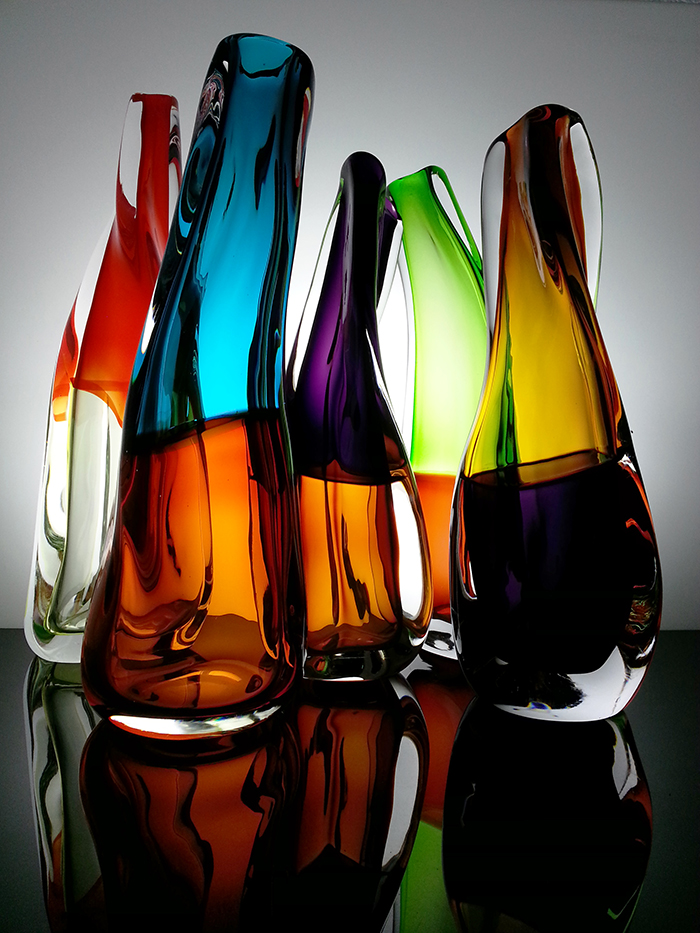
Do you have a career highlight?
There are several that spring to mind, but the best one was being invited by Bild-Werk Frauenau to lead a Masterclass in Enamel Painting and Graal during their ‘Perspectives of Graal Glass: Symposium with Master Classes’ event. The whole experience was a fantastically unforgettable journey, both literally and metaphorically. I remember when Mark Angus contacted me and I was reluctant about the idea, telling him I wasn’t a teacher and had never taught and wasn’t very organised or structured. He said I would be perfect, so I couldn’t refuse.
I must also mention being selected for the British Glass Biennale a couple of times here in Stourbridge, as Stourbridge is where I studied and now live.
Exhibiting at SOFA [Sculpture Objects Functional Art and Design] Chicago with Zest Gallery was memorable, as I attended in person and had a great time, professionally and socially. During the fair, a distinguished-looking gentleman told me he liked my work and that it was positive, organic and sweet. He patted me on the head and, looking down at the name tag to see who was taking such liberties, I discovered it was the American glass artist famed for his paperweights, Paul Stankard! The connection between us turned out to be Paradise Paints.
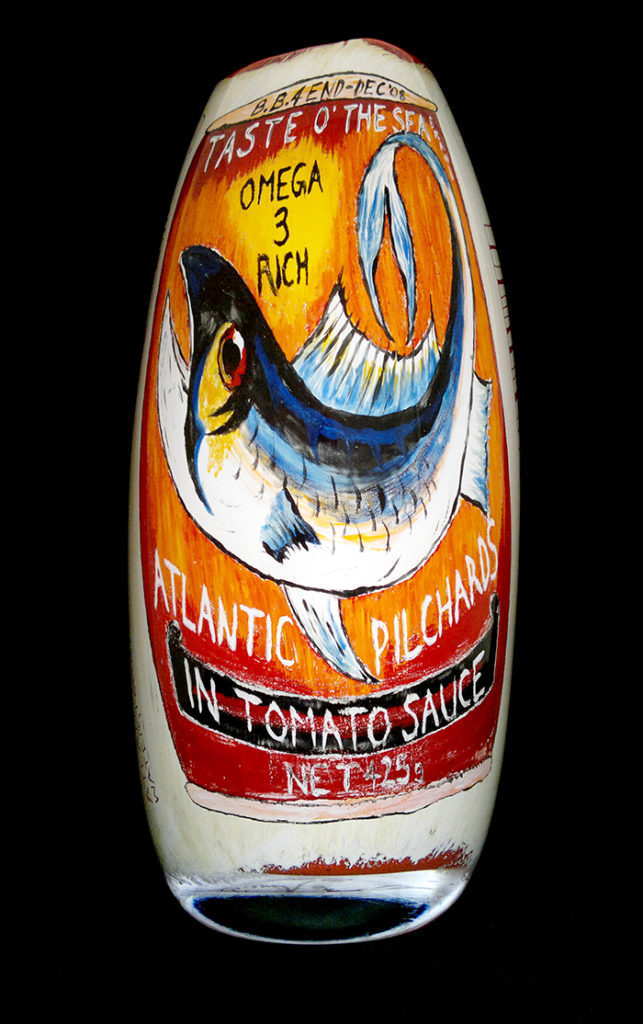
Who or what inspires you?
Basically ‘life experience’ inspires me – specifically, people I have met or know(n), places I have visited, the world around me, how I feel and what’s in my thoughts.
Discovering and bringing together the exciting and expressive mediums of hot glass and painting have enabled me to convey these experiences and emotions as a visual narrative.
The many conversations, often unrelated to glass, with visitors to my studio, have been a constant source of inspiration on many levels.
Working with hot glass, with or without paint, is itself an inspiration. I feel many phenomena contribute to, or govern, physical and emotional experiences and their outcomes. For me, intuition, instinct, osmosis and serendipity are prime examples. Serendipity is often dismissed as a poor excuse for a mistake, which I don’t regard as a bad thing, disappointment or disaster. I just embrace it as an essential part of the learning process and let it guide me down an alternative path. It invariably leads to something of worth and I like to call it ’evolution of the unintended’. At the IGC I wrote an essay titled, ‘How significant is the element of chance in the creative process?’, after discovering what made me gravitate towards certain artists. The common denominator was that they all acknowledged the phenomenon of ‘chance’. They accepted and embraced it, and some deliberately used it as a creative tool.
I must also mention scuba diving and snorkelling as inspirations!
Has the coronavirus impacted your practice?
Not consciously, although I am sure something will surface in due course. Two years is not a long period of time after 70 years on the planet. It hasn’t had a detrimental effect on sales or commissions. It has provided time and space to reflect on the past, live in the present, and look forward to the future. When the RGC had to close to the public, most tenants stayed at home. Without visitors, the building seemed eerie and hollow. Thankfully we are getting back to normality, as our recent Spring Craft Fayre highlighted.
And finally…
Many potential commissioners don’t know where to start so I suggest they contact me by email or phone to discuss the process. It is surprising how easily the ideas start to flow once a dialogue is instigated. Commissions can be deeply personal and evoke all manner of feelings and memories. Capturing and evoking memories in pictures and words on, and in, a piece of glass is a unique and rewarding experience.

About the artist
Vic Bamforth studied traditional stained glassmaking techniques in Buckinghamshire, England, before moving to the Midlands to study for diplomas in glass technique and technology, and design, at the International Glass Centre in Stourbridge.
There he discovered the practice of combining glass blowing and painting.
Today, his established, colourful style of glassmaking is in demand. His work is held in many collections, including at the Corning Museum of Glass, New York, and the Stourbridge Glass Museum.
Find out more via Vic’s website: https://www.vicbamforthglass.com
Main feature image: These highly decorative vessels, ‘Scheherazade Composite’, display Vic Bamforth’s exuberant style.
